Riverine warfare is an oft-overlooked part of naval operations, eclipsed by the bigger ships that operate on blue water. But the so-called brown-water navies have played an important part in military operations for millennia, almost always in close concert with land forces. A force that controls rivers and lakes can use them as a highway for troops and supplies while turning them into barriers for the enemy.
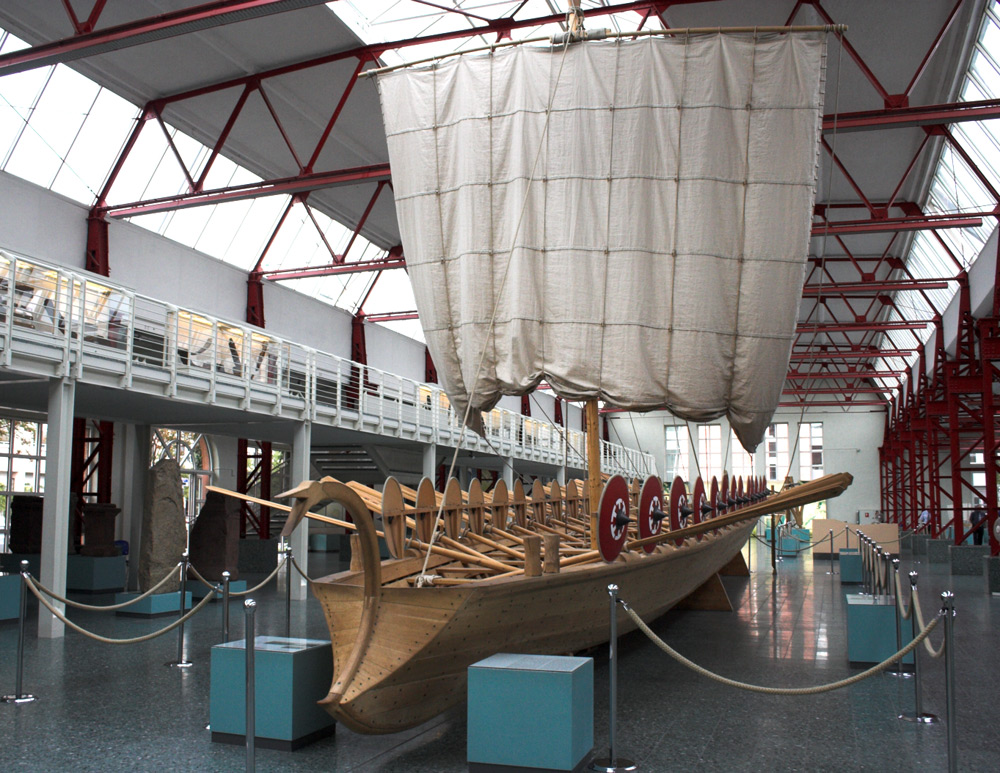
A ship of the Classis Germanica
The first naval operations were almost certainly on lakes and rivers instead of the open sea, but these are long lost. The navy of ancient Egypt operated on the Nile, although details are sparse. We have better records of the Roman Navy, which operated a very large fleet, the Classis Germanica, on the Rhine and other rivers of what is now France, Germany, and the Low Countries. Particularly after the Romans gave up their attempts to conquer the Germanic tribes on the east side of the Rhine, it served not only to provide supplies and communications to the Roman garrisons, but also as the first line of defense against barbarian incursions. Similar fleets operated on the Empire's other major rivers, including the Danube, the Nile, the Tigris, and the Euphrates. But available information on these fleets is limited, so we'll start our look at modern riverine warfare with North America, the first major example of which was the British ascent of the St. Lawrence during the Seven Years War, culminating in the capture of Quebec City.
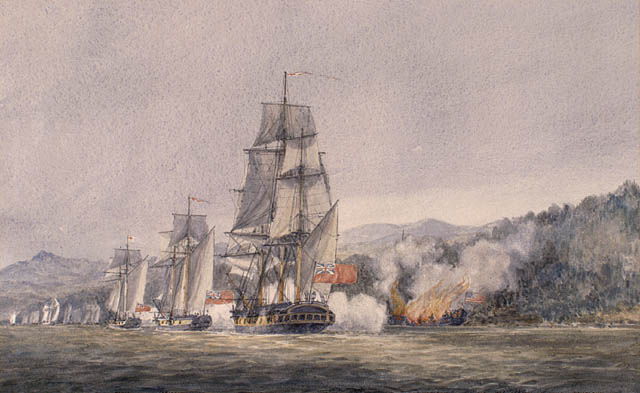
The Battle of Valcour Island
The first naval operations by the nascent United States were riverine. After capturing Fort Ticonderoga, Benedict Arnold launched a raid on Fort St. Jean at the other end of Lake Champlain,1 capturing a British sloop-of-war which was renamed Enterprise, the first in a long and illustrious line of American vessels to bear that name. After the unsuccessful American invasion of Quebec, Lake Champlain again assumed great importance as a potential invasion route into the heart of the colonies. The summer of 1776 saw both sides building ships on the lake and the surrounding rivers, hoping to secure control. Finally, in October, the British sent their flotilla out, and managed to defeat Arnold's ships near Valcour Island. Despite this, Arnold's strategy had delayed them long enough that they had to withdraw until spring, ultimately setting the stage for the crucial Battle of Saratoga, which brought France into the war. Later, the Americans built extensive fortifications at West Point, New York, most notably a giant chain to block the Hudson, to prevent the British from cutting New England off from the lower colonies.
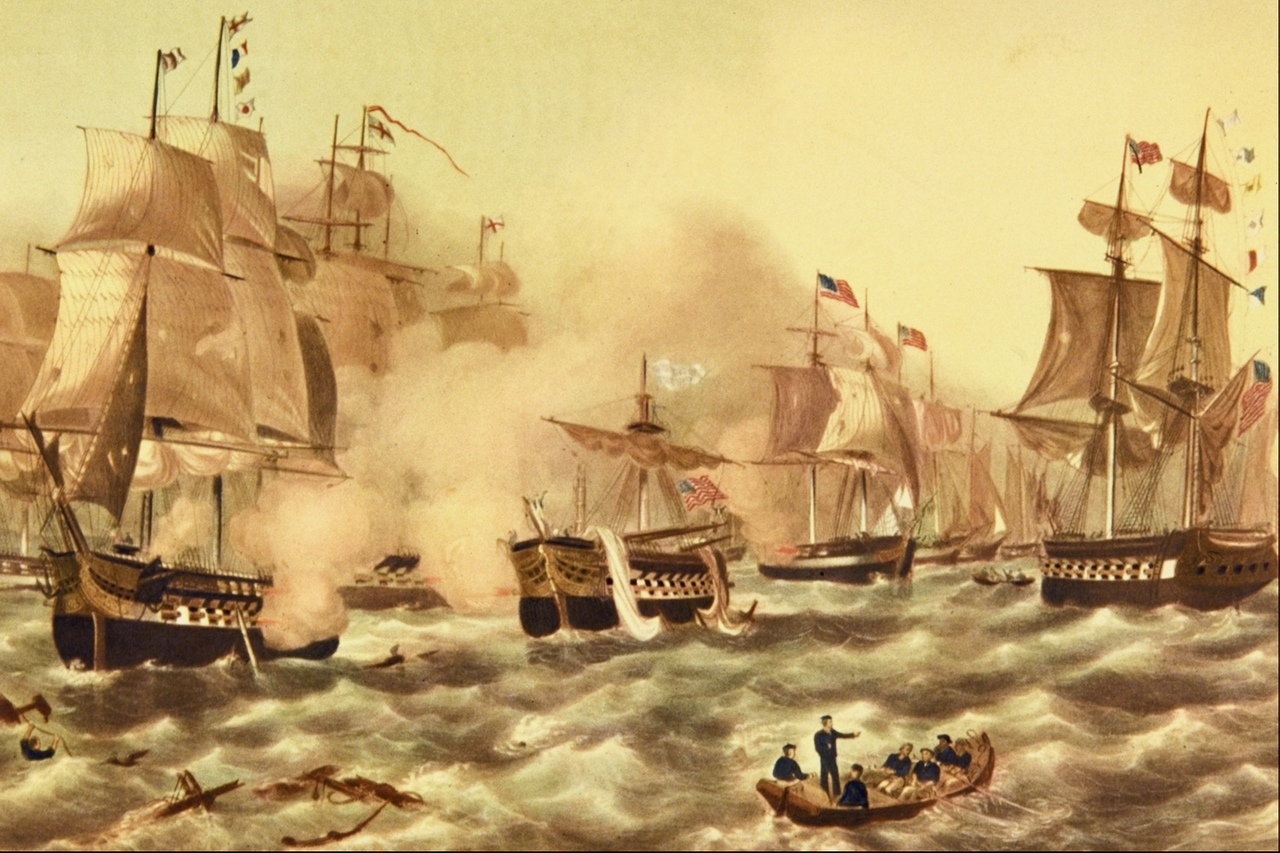
The Battle of Lake Erie
The economic importance of North America's inland waterways, most prominently the Great Lakes and the Mississippi River, was mirrored in their strategic importance during the 19th century. During the War of 1812, Lakes Erie and Ontario were vital to the contest for control of Canada and the Old Northwest, and after the British secured the initiative in that region, Oliver Hazard Perry's victory at the Battle of Lake Erie in 1813 proved critical in throwing them back. Perry was forced to abandon his flagship after it was battered into a wreck, and rowed to another vessel, from whence he directed the Americans to victory. The next year, another British invasion, in an attempted repeat of their strategy from the Revolutionary War, was thwarted on Lake Champlain. Unfortunately, the Americans could not match the might of the Royal Navy where seagoing vessels could reach, and to delay the British campaign against Washington DC, a flotilla of gunboats and barges was constructed on the Chesapeake Bay, and successfully skirmished with the British for months before it was finally run to ground. And in the south, an American riverine force managed to hold off the British assault on New Orleans long enough for Andrew Jackson to prepare his defenses and win the final battle of the war.
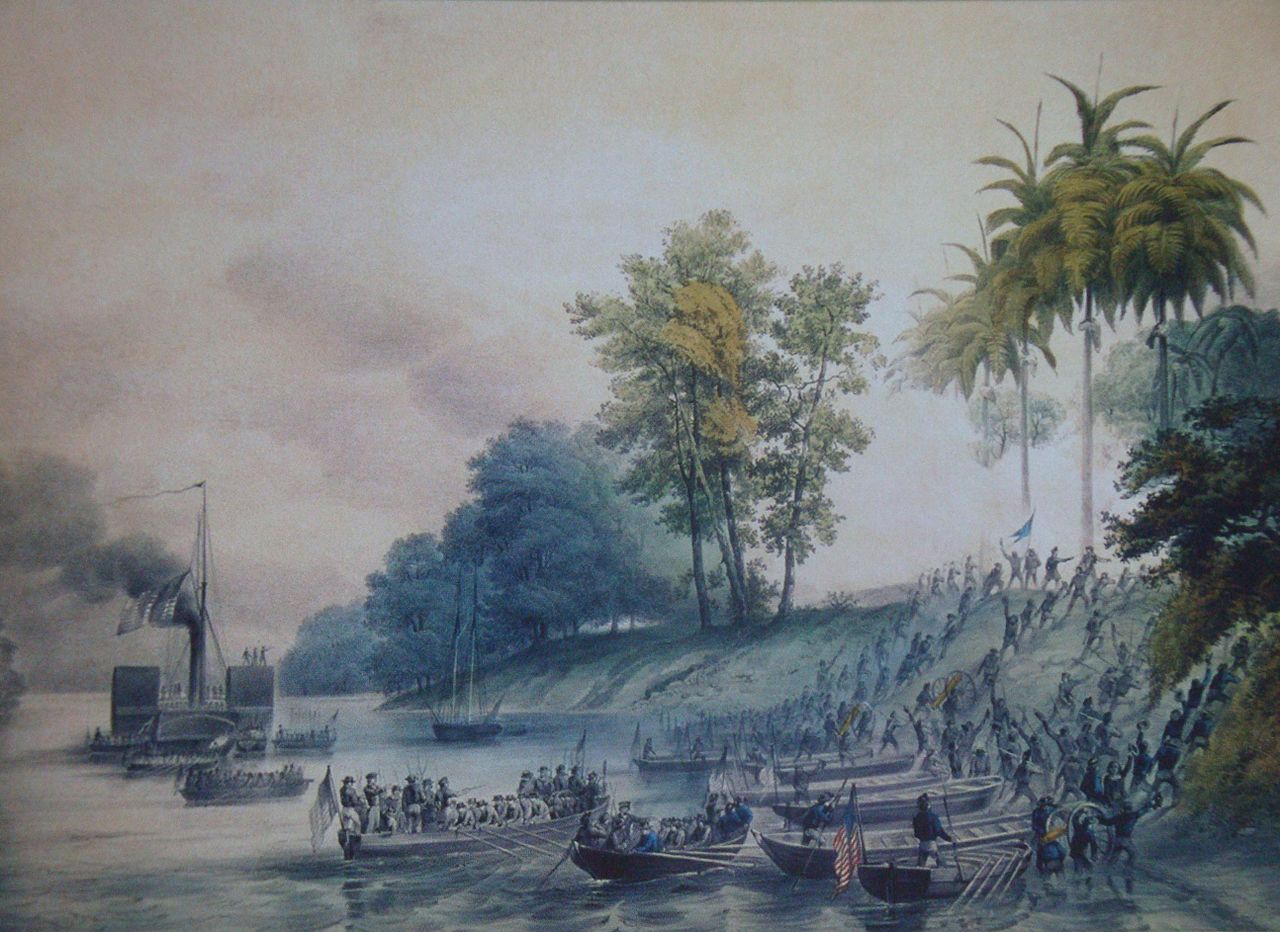
Perry's men go ashore at Tabasco
The end of the war didn't end USN operations on fresh water, either. Increased coastal trade, particularly along the Gulf Coast, brought with it piracy based out of the Carribbean, and the Navy began an intense anti-pirate campaign, largely carried out by small detachments of men in open boats who often had to venture upriver to find their quarry. It was successful, but a new challenge appeared in the 1830s, when the government began a campaign to remove the Seminoles from Florida. Much of the conflict took place in the Everglades, a dense maze of swamps, streams, and boggy ground. A "Mosquito Fleet" of canoes, barges, and other small vessels did sterling work scouting, raiding, and maintaining lines of communication between more conventional forces. This experience was expanded upon during the war with Mexico, when Matthew Perry, later famous for opening Japan to the West, twice ascended the Tabasco River with steamships and attacked the city of San Juan Bautista. The first attempt was less than successful, but the second seized the city and closed the last port on Mexico's Gulf Coast.
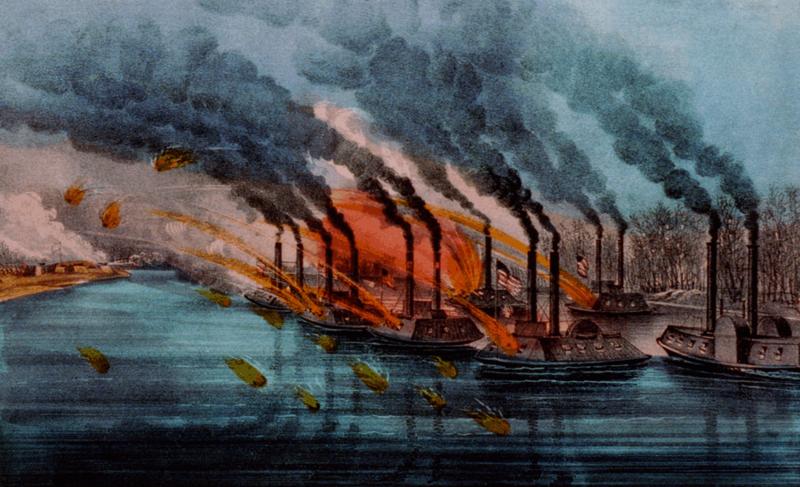
Ironclads duel with Fort Henry
Riverine warfare was even more important a decade and a half later, when the US plunged into the Civil War. The Mississippi and its tributaries were major arteries for goods in the western portions of the country,2 and the Big Muddy itself an obvious route of attack, allowing the Union forces to cut Arkansas, Louisiana and Texas off from the rest of the Confederacy. This was made much easier by recent developments in metallurgy, allowing a floating vessel to carry meaningful armor for the first time. Americans first put this technology to use on the Mississippi, with the City class ironclads built by St. Louis industrialist James B. Eads. These ships formed the core of the Mississippi River Squadron, which first went into action against Fort Henry, Tennessee, alongside a general by the name of Ulysses S. Grant. The ironclads of the fleet, one commanded by a certain William D. Porter, managed to bombard the Fort into submission even before Grant brought his troops up. However, they were turned back at Fort Donelson with heavy casualties, and had to rely on Grant to take the positions. Later, gunboats would guard Grant's flank at Shiloh and provide firepower for the drive down the Mississippi.
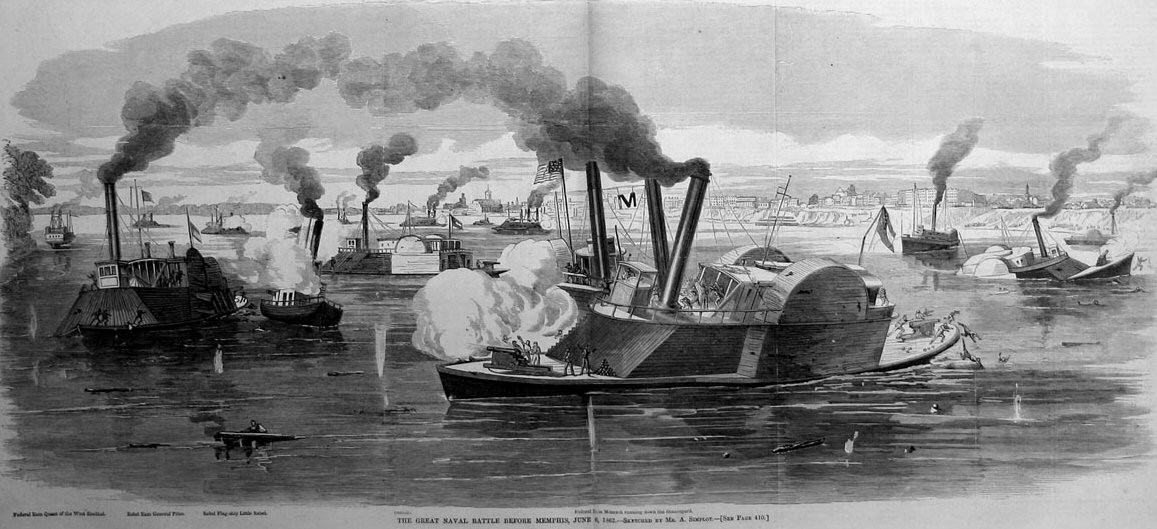
The Battle of Memphis
The Confederates were not blind to the advantages of naval power, and quickly began to build a fleet of their own. However, they did not have the industrial resources to match the Union, and had to resort to using cotton to armor their ships,3 which were intended primarily for ramming.4 In June 1862, the Union force closed in on Memphis and decisively routed the Confederates, sinking or capturing all but one of the enemy vessels.5
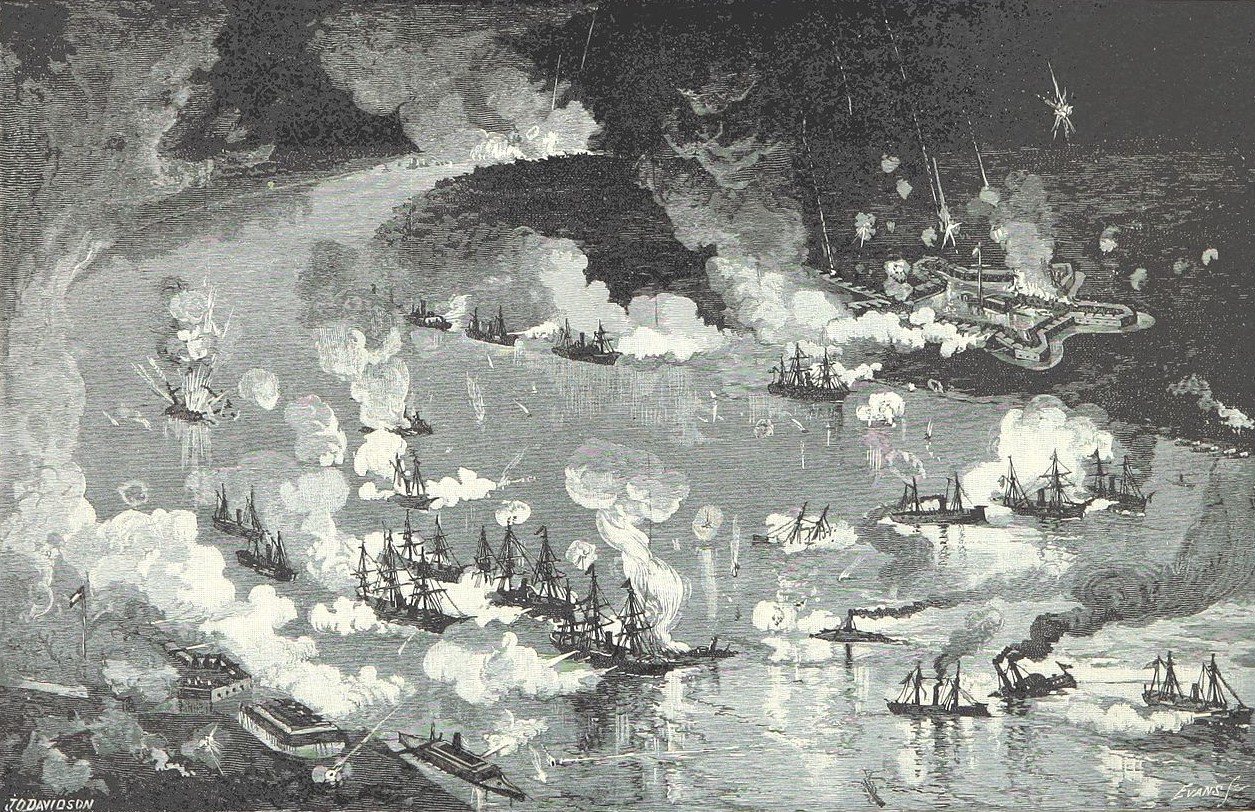
Farragut's ships run past the forts below New Orleans
The Union offensive in the north drew off most of the defenders of New Orleans, and Lincoln had decided to take advantage of this, dispatching a force under David Farragut to seize it from the South. Farragut found his passage blocked by Forts Jackson and St. Philip, and after an initial attempt to reduce them with mortar boats failed, he hatched a daring plan. His fleet passed between the forts under cover of darkness, trading ineffective fire with the shore batteries, then defeating the motley fleet the Confederates had assembled. Only one ship was lost, and New Orleans soon surrendered, followed by the bypassed forts.
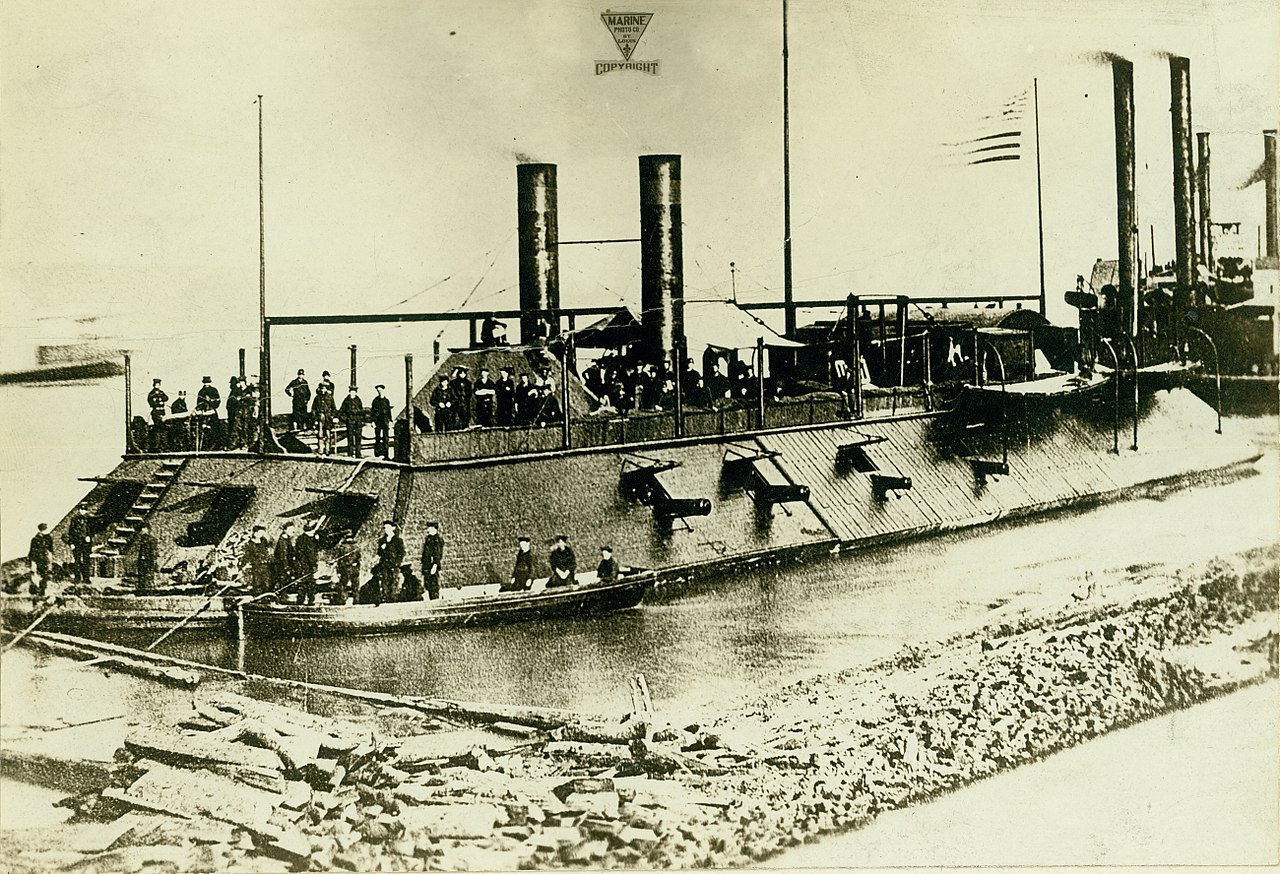
City class ironclad Cairo. Cairo became the first vessel sunk by a controlled mine, and was salvaged in 1964. Today, she is on display near Vicksburg.
Farragut began to drive up the Mississippi until he was stopped by guns on the bluffs above Vicksburg, Mississippi, which his guns couldn't elevate enough to fire on. Mortar vessels suppressed them enough for his fleet to run by, but without troops, he was unable to take the city. Grant, coming from the north, ran into trouble and it would take nearly a year for the last block on the Mississippi to be cleared. In December, Grant launched a combined expedition through the Yazoo River in an attempt to flank Vicksburg,6 but it was stopped by the Confederates, as were other efforts to use the rivers to bypass the defenses around Vicksburg.
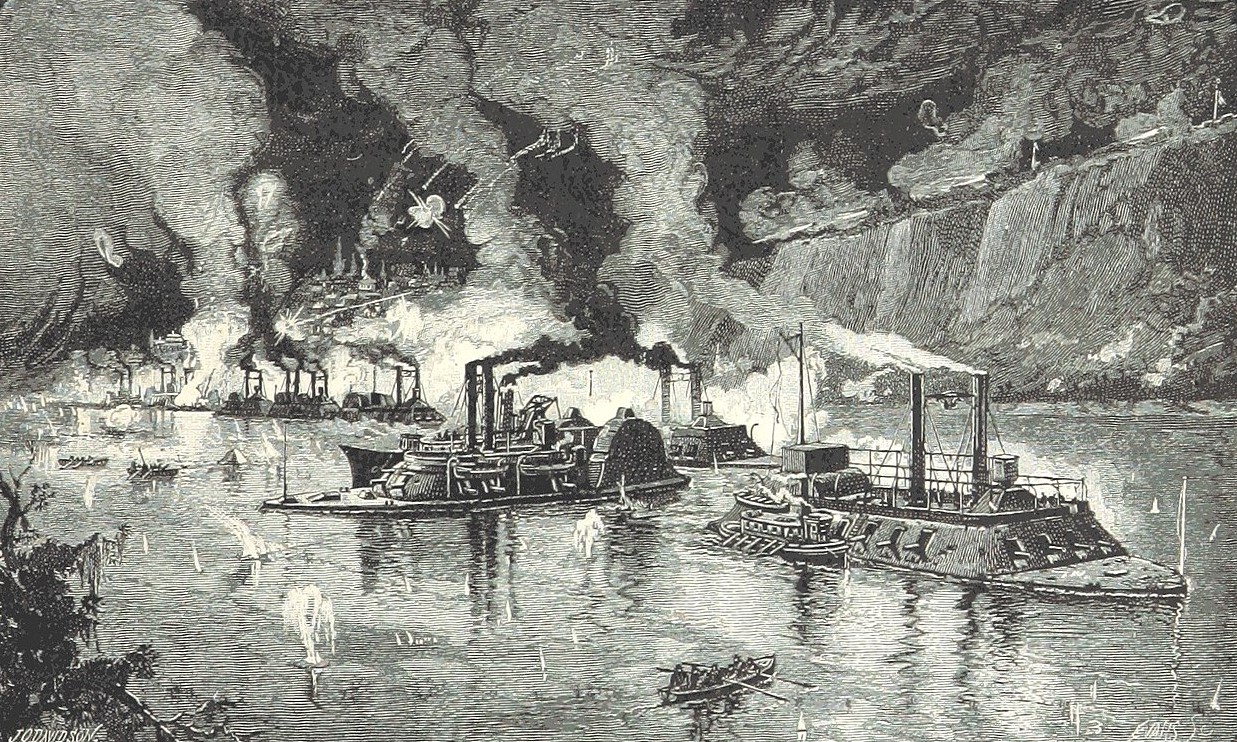
Porter's flotilla below Vicksburg
In April 1863, the Mississippi River Flotilla, now under David Dixon Porter, ran back past the defenses at Vicksburg, ferrying troops across the Mississippi south of the city in the largest American amphibious operation until WWII. Vicksburg surrendered to Grant on July 4th, and Lincoln proclaimed "The Father of Waters again goes unvexed to the sea." Riverine naval power had been in large part responsible for the victory in the west, and the freshwater naval forces continued to serve both in later western campaigns like the Union attempt to control the Red River and in the east, such as an attempt to reach Richmond via the James River in 1862,7 turned back at Drewry's Bluff.
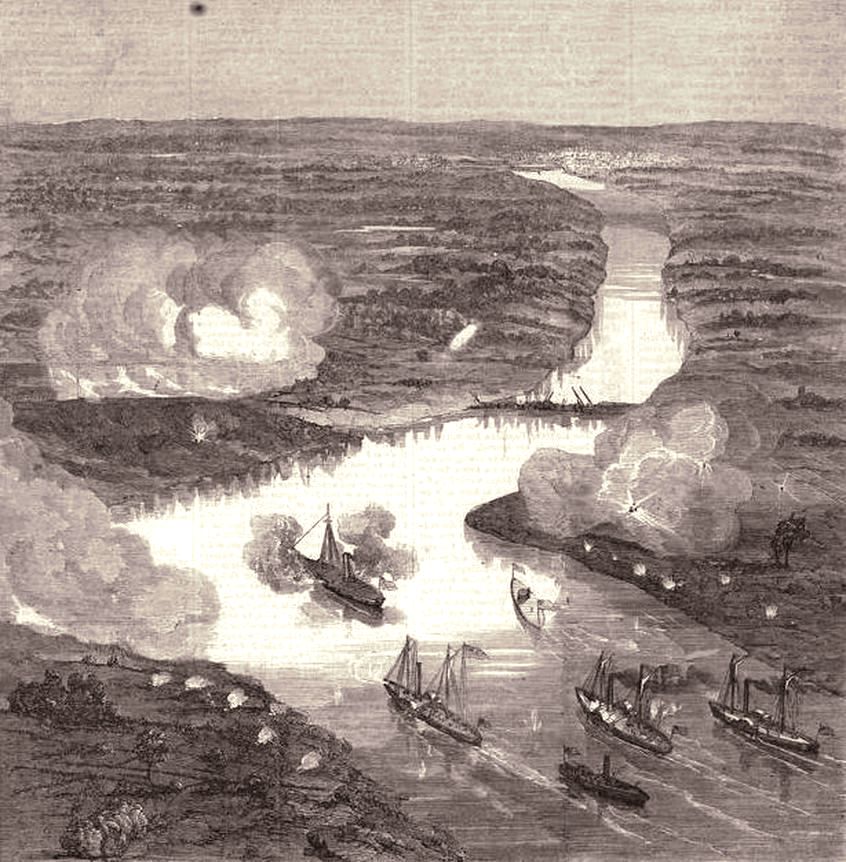
Monitor8 attacks Confederate positions at Drewry's Bluff
The Civil War marked more or less the end of riverine warfare within the United States; Canada would make a more notable contribution to its history five years later. The Wolsley expedition, dispatched to quell the Red River Rebellion, moved deep into what is now Manitoba largely through the use of navigable waterways in one of the great epics of military endurance. Since then, the continent has largely been peaceful, and the waterways have carried commerce instead of troops. But while the American contribution is significant and well-documented,9 the late 19th and early 20th centuries would see riverine forces reach new heights of importance and power around the world.
1 Riverine warfare includes combat on lakes, and basically any water that isn't accessible to normal ocean-going warships. ⇑
2 The naming of the Union armies is a good illustration of the importance of rivers in the war. Most of them were of the form "Army of the [major river in the area]" such as the Army of the Potomac and the Army of the Tennessee. ⇑
3 Strictly speaking, cotton was only one part of the armor of these ships, and probably the least important part. But it's still hilarious that a rebellion founded on cotton ended up using the stuff as armor for its ships. ⇑
4 Note that this was before the Battle of Lissa convinced everyone that ramming was a good idea. It's also worth pointing out that the Union built its own fleet of rams, because everyone in this era though it was a good idea. ⇑
5 This battle is notable for having terrible command structures on both sides. The Union gunboats and rams had separate chains of command going all the way to Washington, while the Confederate ships were commanded by civilian riverboat captains, with gunners drawn from the Confederate Army. It's also notable for being one of only a handful of exclusively naval battles during the war, despite being 500 miles inland. ⇑
6 For those confused by the geography, this was in the region known as the Mississippi Delta, which has a bunch of rivers running parallel to the main Mississippi. ⇑
7 Yes, I'm aware this was before the fall of Vicksburg. ⇑
8 Yes, that Monitor. ⇑

Comments
Are we going to see the Battle of Red Cliffs in this series?
Only in passing, unfortunately. I looked into the military history of the Yangtze, but ran into the problem of not having sufficient reference frame to do the topic justice, or even to find all of the relevant battles without a lot of work. So I'm focusing on relatively modern actions, and mentioning stuff like that in footnotes. It doesn't help that the wiki on Chinese naval history is pretty terrible.
Okay, I happened to click that link to the Battle of Plattsburgh(https://en.wikipedia.org/wiki/BattleofPlattsburgh), and it deserves some kind of "real event most resembling fiction" award.
The US flagship, fighting at anchor, duels the better-armed British flagship until it has essentially no guns left on the engaged side. But--climactic plot twist!--before the battle the American commander had put down a special set of anchors that let him spin the ship 180 degrees, bringing the undamaged side to bear and winning the battle.
“I know something you don't know.
IMy ship is not left-handed!”